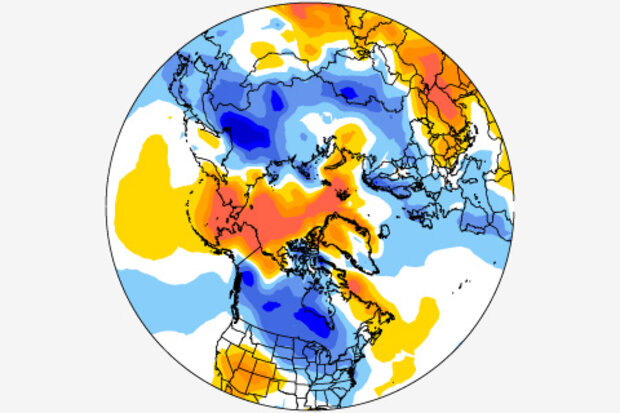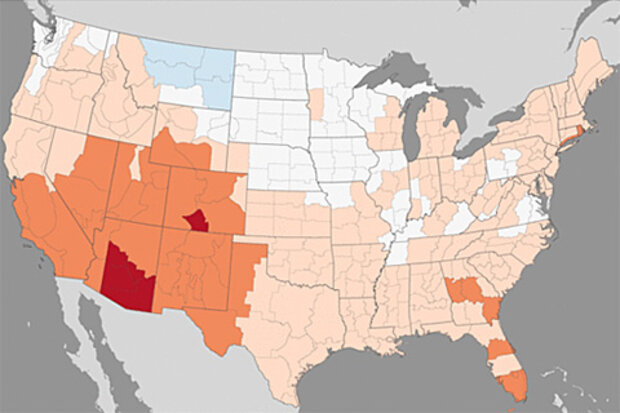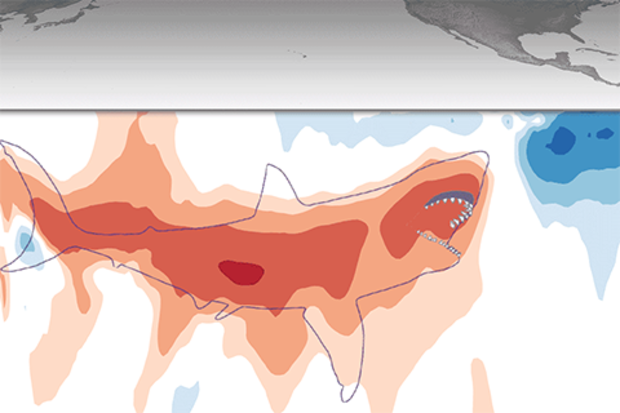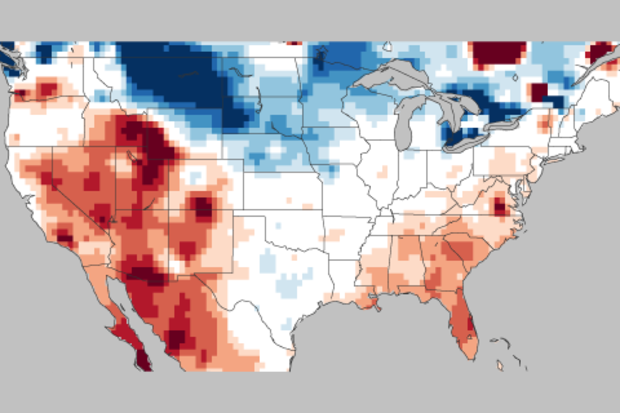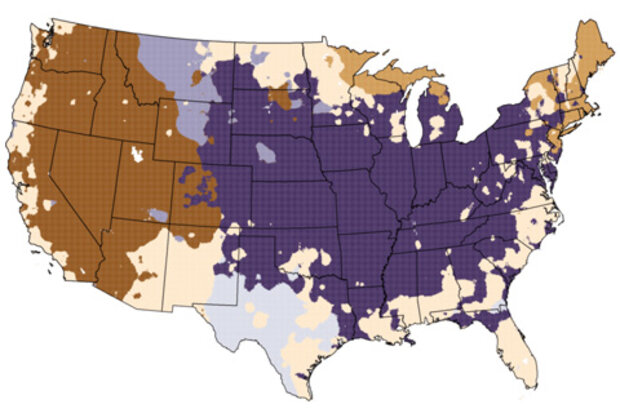Blogs
This is a guest post by Dr. Amy Butler (@DrAHButler) who is a research scientist at the University of Colorado Cooperative Institute for Research in Environmental Sciences (CIRES) and sits within the NOAA Chemical Sciences Division (CSD). She is a returning guest author, and her research focuses on large-scale climate patterns and phenomena, such as the Arctic and Antarctic Oscillations and sudden stratospheric warmings.
Spring hasn’t come quickly enough for many of us who feel battered by the wild winter weather over the past couple of months. Multiple nor’easters brought feet of snow to the northeastern U.S., while severe cold and winter storms punished portions of…
Read article
This week’s Beyond the Data edition looks a little more deeply at NCEI’s monthly U.S. climate report for March.
Cold season blues...or reds, rather
One of the handful of obscure meteorological/climatological seasons is the “cold season,” which in the U.S. runs from October through March. Now, I know it’s a stretch for a reader in, say, St. Paul to think of Arizona’s typical October-through-March average temperature in the upper 40s as a “cold season,” but it's all relative. For a state where the daytime high in the summer is 92F, the term "cold season" applies in Arizona, too.
Speaking of Arizona’s “cold season,” this was the warmest such season on…
Read article
La Niña conditions prevailed through March, but it’s very likely the great La Niña of 2017–18 is a sinking ship. ENSO-neutral conditions are expected to arrive within the next couple of months, meaning sea surface temperatures in the central Pacific will return to near the long-term average.
Amity Island
The Niño3.4 Index, our very favorite measurement of the central Pacific sea surface temperature, was about 0.5°C cooler than average over the past week, according to the weekly OISST data set. This anomaly (the departure from the long-term average) is just on the border of neutral conditions: when the Niño3.4 Index is in between -0.5°C and 0.5°C.
Of course, when we’re talking EN…
Read article
I know it may seem a bit ridiculous to say that winter is over when the eastern half of the United States keeps getting repeatedly smacked by nor’easters. But from a meteorological perspective, winter lasts from December 1 – February 28. And it is over. Which can mean only one thing! It is time for the ENSO Blog’s annual post looking back at how NOAA’s Climate Prediction Center’s Winter Outlook did.
So for residents of the Northeast, I ask you to postpone shoveling out your car for 10 minutes, because it’s time to talk forecast verification. (I have an obsession, see here, here, here and here).
Let’s start with the temperatures
The Winter Outlook, which came out in November…
Read article
Welcome to the sprung forward part of our calendar.
(yawns)
I'm really sorry about that. I didn't sleep well last night.
If you’re one of the thousands of Americans who strolled into your first appointment about 56 minutes late today, I feel your pain. Been there, done that! So, let’s protest the onset of Daylight Saving Time by springing back. Take that, clocks!
Today’s Beyond the Data will look back into some of the supplemental information attached to our February / Winter State of the Climate reports. Insider tip: the fun stuff is always in the supplemental information. We’ll pull out some fun regional trivia, but there’s at least one lesson about the climate system…
Read article
